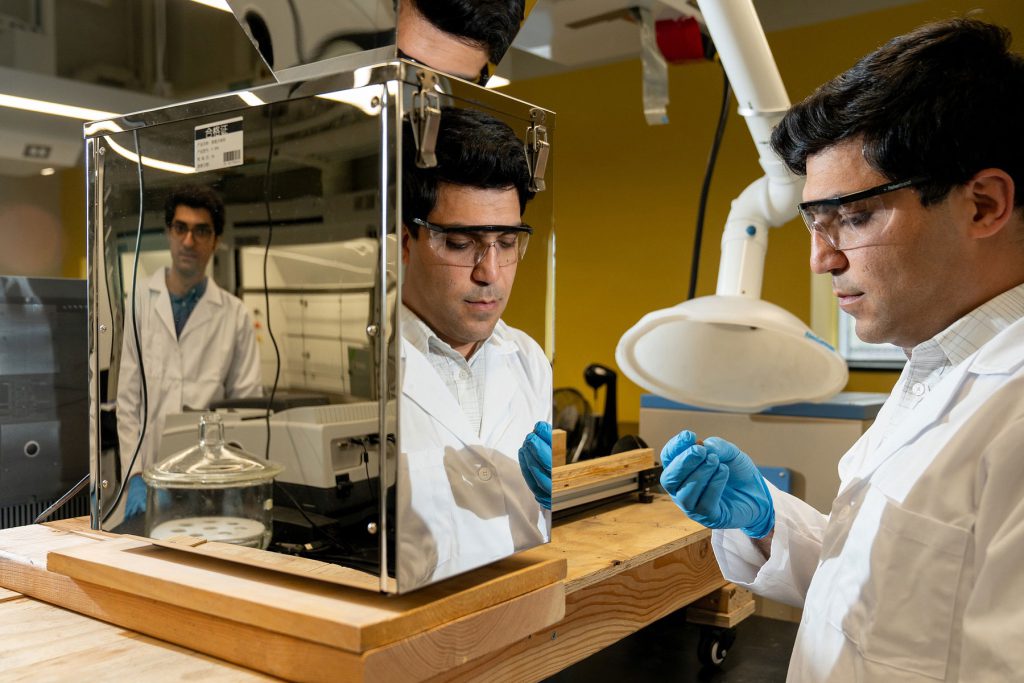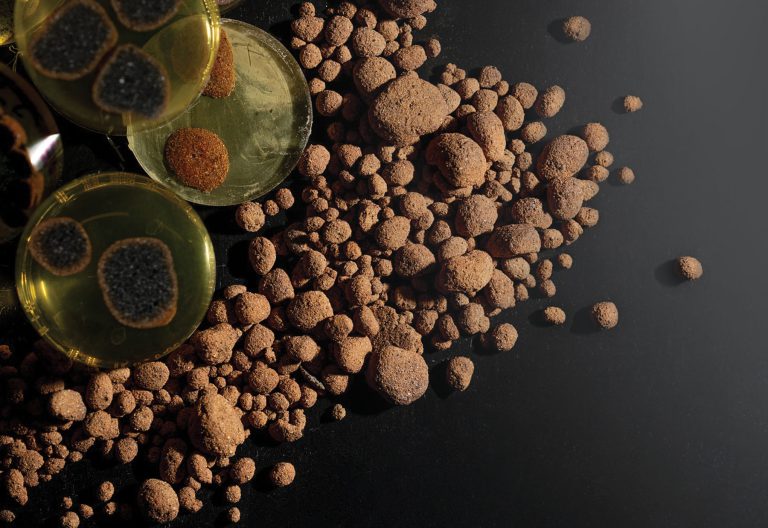Drexel Engineers are turning industrial waste products into viable building materials.
Coal combustion ash (CCA) is one of the most abundant industrial waste products in the world. Current technologies only allow recycling of about 50 percent of CCA for applications such as concrete, while the remaining waste CCA (W-CCA) is often stored in either landfills or surface impoundments, which can present a potential danger to local ecosystems if disposed of improperly.
Thanks to the work of experts at Drexel Engineering, W-CCA may not only be saved from landfills, it might be the foundation of a new, better kind of building material.
Amir Farnam, PhD, assistant professor of civil, architectural and environmental engineering (CAEE), explains that the material fits into a category called lightweight aggregate (LWA), a mixture of fine and coarse particulate matter that are mixed together to form strong, durable concrete.
“Typical ingredients in concrete include sand, crushed stone, slate, clay and more, and in some cases, fly ash (fine, low carbon and amorphous forms of CCA) can be used,” Farnam said. “But some of the properties that are left in a lot of W-CCA, such as high carbon content or non-amorphous materials, make it hard for use directly in concrete. Additionally, presence of heavy metals in W-CCA make landfilling process difficult and may create potential risk to the environment.”
Farnam, along with fellow CAEE faculty professor Grace Hsuan, PhD, and associate professor Sabrina Spatari, PhD, as well as Mo Balapour, PhD ’21 and E.J. Garboczi, PhD, of the National Institute of Standards and Technology, developed a unique method to use W-CCA and create an aggregate material with properties that make it ideal for mixing into concrete. The research was supported through a National Science Foundation EAGER award, and the group won the Best Paper Award from American Ceramic Society in 2021.
“We mixed the ash with a custom chemical solution, prepared spher- ical pellets, and ‘baked’ the resulting pellet in a stationary furnace at a certain temperature to create spherical lightweight aggregate” Balapour explained. “As we refined our process, we also started to explore how we could make the spherical pellets more porous. This is where we knew we could have an advantage over other LWA materials.”
Porosity is important because, once concrete is poured, it must go through a curing process in which it dries out over the course of several days. If it dries unevenly, it can form cracks and weaken the mixture.
The team’s material — which they dubbed Spherical Porous Reactive Aggregate (SPoRA) — can hold almost half its weight in water, making it ideal for the concrete’s wet phase, and releases the water slowly over time, helping the concrete cure from the inside out with less cracking.

Hsuan believes that the process for creating the material can be customized depending on the needs of the final material, opening up new possibilities for SPoRA.
“The SPoRA-making process is simple enough to produce aggregates of any size and water capacity, so we believe it could be used for a number of applications in the construction industry,” she says.
So varying are the potential applications that the project has been spun out into a start-up called SusMaX, short for Sustainable Material Exploration, with Balapour as CEO and Farnam as technical advisor. Balapour and Farnam spent 10 weeks in 2018 training with the NSF Innovation Corps, assessing the market for SPoRA and conducting interviews with experienced businesspeople in the field.
“We discovered that there is a demand for LWA in the tri-state area, but that the nearest manufacturers were in upstate New York and North Carolina,” Balapour said. “Transporting LWA is expensive and environmentally irresponsible. Meanwhile, there are more than a dozen facilities in Pennsylvania alone that output coal ash waste, so there is need and there is opportunity.”
Balapour and Farnam spent three years, again funded by the National Science Foundation, exploring methods to scale up production from the one-pellet-at-a-time method to something more commercially viable. They invested in a rotary furnace with adjustable rotation speed and angle to dial in the ideal yield. They are currently preparing to prove their ability to produce at scale to attract investors. Balapour says that the properties of SPoRA make it a versatile material, boosting his confidence that SusMaX will find success.
“In addition to being a concrete additive, SPoRA could be used in any number of applications,” he said. “It can be part of a filtering process for waste-water treatment, or it can be part of a drainage process for green roofs or other landscaping applications.”
Ultimately, Farnam says, finding ways to use more W-CCA can only be a good thing. “The more waste we can turn into useful products and keep out of landfills, waterways and more, the better off we will all be,” he said “This project is as much about engineering ways to protect the planet as it is to create good construction material.”


